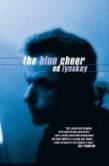AUTHOR INTERVIEW: Ed Lynskey, part 2
By Kathleen Bolton | August 10, 2007 | Comments Off on AUTHOR INTERVIEW: Ed Lynskey, part 2
 Noir/P.I. novelist Ed Lynskey, like all writers, wears a checkered pedigree. He worked in Washington D.C.’s defense industry for many years, which gives the detail he works into his novels the coveted ring of authenticity when it comes to modern-day weaponry. But just as crucially, he’ll evoke the swinging of kudzu vines draped in an Appalachian forest with the same freshness. His latest novel, THE BLUE CHEER, combines the disparate worlds of 21st century terrorism with a 1950’s flavored Southern setting. If you missed part one of our interview with Ed, click HERE.
Noir/P.I. novelist Ed Lynskey, like all writers, wears a checkered pedigree. He worked in Washington D.C.’s defense industry for many years, which gives the detail he works into his novels the coveted ring of authenticity when it comes to modern-day weaponry. But just as crucially, he’ll evoke the swinging of kudzu vines draped in an Appalachian forest with the same freshness. His latest novel, THE BLUE CHEER, combines the disparate worlds of 21st century terrorism with a 1950’s flavored Southern setting. If you missed part one of our interview with Ed, click HERE.
We are pleased to bring you part two of our interview with Ed Lynskey.
Q: In your novel, you explore race relations, homegrown terrorism, and militant anti-religious sentiment–all controversial topics that come loaded with baggage. Why? Did you worry that you’d turn off people
EL: Those evils do make for a vile mix. I suppose I wanted to tackle those issues that push my buttons the most. I don’t like writing about bad guys, but a crime novel takes on some ugly, dark aspects of the human psyche.
I felt like it was important to identify The Cheer as the atheist/racist cult but not to fully divulge their agenda, or who they really are. I’ve noticed an unrealistic trend in modern thrillers to overexplain their antagonists’ motives and put a detailed face on the evildoers. Perhaps this is to comfort the reader. Tie up everything in a neat package. But more often than not, we don’t really know why, or even who, our enemies are. Realistic fiction will reflect that dearth of information.
Q: Your characters are beautifully drawn with authentic voices and motivations. What is your approach to characterization? Do you find the plot informing the character, or the other way around?
EL: I try to pay attention in the revision rounds to the characters: what they say, think, and do. If a scene or dialogue seems out of character, I’ll make adjustments. Or if a character has a skimpy scene, I might flesh it out more. In a P.I. novel written in first-person POV, the writer is somewhat hampered to focus on and develop complex secondary characters. The old pulpsters John D. MacDonald and Charles Williams created wonderful minor characters.
Q: Do you have advice for anyone wanting to break into noir?
EL: I’m not sure anything I could say contributes beyond what has already been noted and written many times before me. For me, it’s the pure joy to open a book and read, even after a disappointing setback, you know like not getting paid by a publisher or dealing with an arrogant literary agent, or your work “almost” getting accepted or bought by a big market magazine. You hear the drumbeat how it’s all a business, but there’s also an entertainment variable for the author. When the fun is gone, then the product suffers.
Q: This is indeed an industry filled with disappointments. How did you keep hope and the fun alive during the long years writing in obscurity?
EL: I agree it’s a heartbreaking, heartless business. I’m not sure I handle it so well. It boils down to balance, I suppose. At the end of the day, I’m done with the writing. It’s what I do, but not who I am. The disappointments sometimes come so fast that one day’s blurs into the next one. I liken it to the baseball analogy. A starting pitcher gets shellacked during a game and gets a quick hook. But five days later, he’s back on the mound, taking his next turn. You take your lumps each writing day, but by the next forget what happened the previous one
Q:What are you reading now?
EL: I regularly review new mysteries and thrillers for Mystery Scene and new literary fiction. Those gigs take up much of my reading time, but it affords me an opportunity able to gauge and comment on what’s state-of-the-art in both genres. I discovered a wonderful new (to me) writer Margaret Cole this week. I like to dip into the older writers, too. Stark House published two of Peter Rabe’s fine Gold Medal novels, The Box and Journey into Terror.
THE BLUE CHEER is available now at online booksellers and bricks n’ mortar bookstores everywhere.








